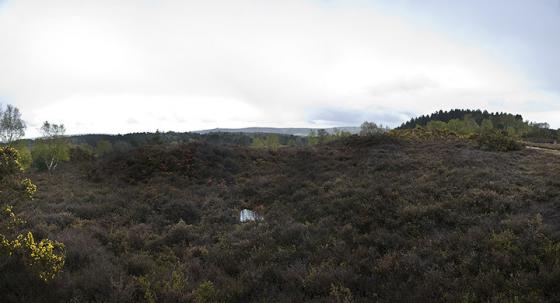Gallows Hill, as the name suggests, was once a place of execution, but long before that it was a Bronze Age barrow cemetery (if you can count four large mounds as a cemetery). It’s part of the larger Graffham Common area which contains quite a large number of tumuli, with barrows at Little and Great Bury nearby. These heathland barrows are typical of the surrounding area, occurring in patches along the northern side of the South Downs at places like Lord’s Piece, Sullington Warren, Lavington Common and Iping Common. In fact it’s fair to say that there are probably more monuments in these areas than directly on the ridge of the South Downs where they are more noticeable, though any signs of habitation, defence, etc. have long since disappeared from the heathland areas, buried by cultivation, villages and towns.
The barrows at Gallows Hill are once again openly visible having spent the last hundred years covered in pine forest with trees actually growing on some of them. Recent cutting and clearance reveals four quite large and handsome mounds in a fairly lofty position on the edge of an escarpment overlooking swathes of woodland and the valley of the River Rother.




































